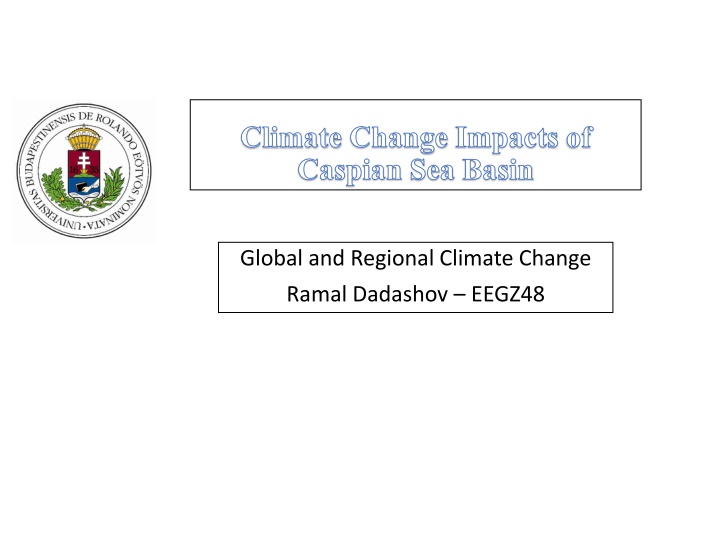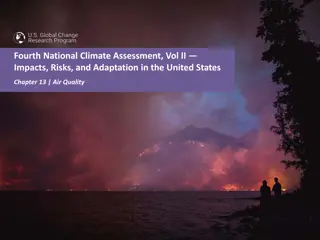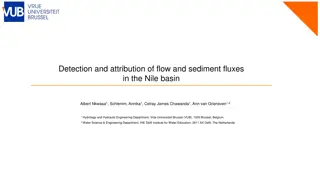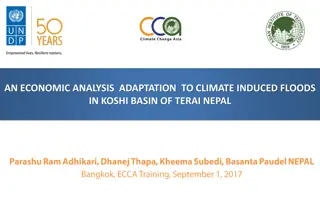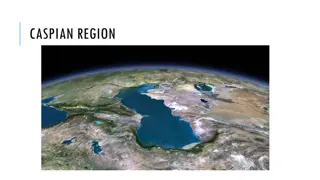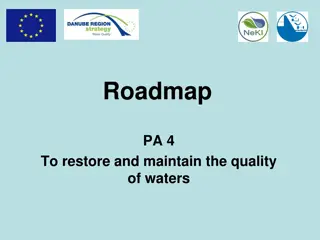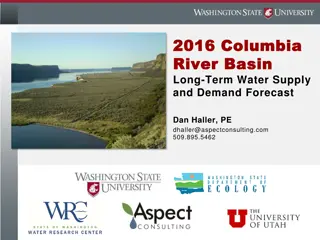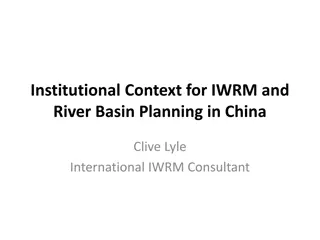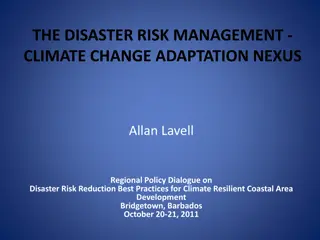Impacts of Climate Change on the Caspian Sea Basin
The Caspian Sea Basin is facing numerous consequences of climate change, including temperature and precipitation variations, sea level fluctuations, regional land degradation, changes in sea ice extent, and increased vulnerability to flooding. Various countries in the region are experiencing different impacts such as aridity, desertification, soil salinity, and extreme weather events. The overall assessment indicates a significant threat to the environment and societies in the Caspian Sea Basin due to climate change.
Download Presentation

Please find below an Image/Link to download the presentation.
The content on the website is provided AS IS for your information and personal use only. It may not be sold, licensed, or shared on other websites without obtaining consent from the author.If you encounter any issues during the download, it is possible that the publisher has removed the file from their server.
You are allowed to download the files provided on this website for personal or commercial use, subject to the condition that they are used lawfully. All files are the property of their respective owners.
The content on the website is provided AS IS for your information and personal use only. It may not be sold, licensed, or shared on other websites without obtaining consent from the author.
E N D
Presentation Transcript
Climate Change Impacts of Caspian Sea Basin Global and Regional Climate Change Ramal Dadashov EEGZ48
Contents Introduction Basic consequences of Climate Change in Caspian Basin Temperature and precipitation in the Caspian Sea basin Caspian Sea level fluctuations Regional land degradation Caspian Sea ice extent Vulnerable flooding Result
Introduuction The Caspian Sea, surrounded by the five coastal the largest land- locked water body on Earth. More than 130 rivers flow into the Caspian Sea The primary tributary is the Volga River in the north The Ural River, also in the north, and the Kura River in the west, are also significant tributaries Salinity changes from north to south, from 1.0 to 13.5 parts per thousand (ppt) There are more than 33 icelands
Kazakhstan and Turkmenistan -a lack of rainfall and extreme summer evaporation result in a high level of aridity But deserts and desertification are not limited to the eastern part of the Caspian Sea coastal zone Russia -mainly in Chernije Zemli (Black Lands) region in the Kalmykhian Republic is wind erosion Azerbaijan and ran rainfall more than 600 and 1000 mm/year - deforestation and water erosion result in the degradation of vegetation Turkmenistan remains high salinity of soils (CEP website)
Vulnerable Flooding resulting in considerable loss of lives and widespread economic damage flooding incidents in the Caucasus and Elburz mountain valleys have dramatically increased At the same time, Iran is among those which have been severely affected by droughts.
Result If we summarize all information, conclusion is that; There are several impacts of Climate Change: On Atmosphere- Expected increasing of temperature will be around 4.5 and 6 for end of this century. On land and sea-severe desertification and habitat lost because of oil and gas industry In the northern part of Caspian Sea basin has increasing precipitation, while, southern part of Caspian Sea basin has decreasing precipitation There is flooding risk in the plenty of place where rivers meet with sea. Especially, in the Volga and Ural river basins. On water basin: Reduction of water resources due to temperature increase, indirectly Climate Change impacts to biodiversity of Caspian Sea Because of temperature fluctuations ice boundary change in the Northern part of Caspian sea.
References Caspian Sea- State of the Environment 2010(Report by the interim Secretariat of the Framework Convention for the Protection of the Marine Environment of the Caspian Sea and the Project Coordination Management Unit of the CaspEco project) Transboundary Diagnostic Analysis of Caspian Sea, Volume two Vital Caspian Graphics , 2006 UNEP/GRID-Arendal https://www.livescience.com/57999-caspian-sea-facts.html https://en.wikipedia.org/wiki/Category:Islands_of_the_Caspian_Sea
